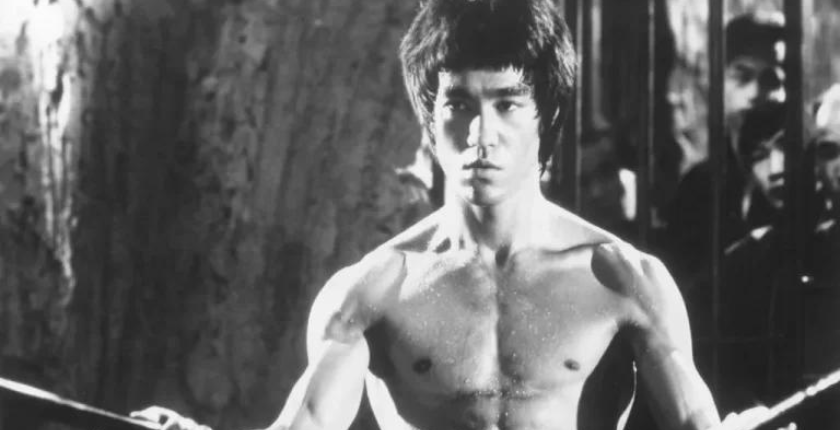How Much Did Bruce Lee Weigh: Unveiling the Legend
Table of Contents
Unveil Bruce Lee’s true weight journey in this captivating article. Explore the legend’s physique and discover, “How Much Did Bruce Lee Weigh?”
In the realm of martial arts and cinematic brilliance, few names shine as brightly as “How Much Did Bruce Lee Weigh”. A cultural icon and a legendary martial artist, Bruce Lee’s impact on the world is immeasurable. One intriguing aspect that continues to captivate enthusiasts is the question: How much did Bruce Lee weigh? In this article, we delve into the details, separating fact from fiction to unveil the true weight of the martial arts maestro.
How Much Did Bruce Lee Weigh?
Bruce Lee’s weight fluctuated throughout his life, but he generally stayed within the range of 130-145 pounds (59-65 kg). His lean, muscular physique was famously honed for agility and speed, making him a powerhouse despite his relatively light frame. While he briefly bulked up to 165 pounds (75 kg) during a period of intense weight training, his fighting weight typically remained in the lower range, proving that size isn’t everything when it comes to martial arts prowess.
Who is Bruce Lee?
Bruce Lee was a Hong Kong-American martial artist, actor, and filmmaker who is considered one of the most influential figures in martial arts history. He is best known for his roles in films such as Enter the Dragon and Fists of Fury, which helped to popularize Kung Fu around the world. Lee also founded his own martial arts style, Jeet Kune Do, which emphasizes practical combat and adaptation. He died tragically in 1973 at the age of 32, but his legacy continues to inspire martial artists and filmmakers alike.
Bruce Lee’s Physique: A Masterpiece in Motion
Early Years and Training
Bruce Lee’s journey began in Hong Kong, where he was born on November 27, 1940. From a young age, Lee exhibited an insatiable curiosity for martial arts. His formal training commenced under the guidance of the legendary Ip Man, known for his expertise in Wing Chun. Lee’s disciplined training laid the foundation for his unparalleled skills and, inevitably, his exceptional physique.
Martial Arts Mastery
As Bruce Lee honed his craft, he ventured beyond traditional martial arts boundaries, creating his own philosophy known as Jeet Kune Do. This dynamic and adaptable approach is reflected in his physicality. Lee’s training routine was a rigorous blend of strength, speed, and flexibility exercises, a symphony of movements that sculpted his body into a work of art.
Read also: The Mochi I Drew is Tasty Today Too Ch 13
Unmasking the Weight Myth
The Hollywood Years
Bruce Lee’s entry into Hollywood marked a watershed moment for martial arts on the silver screen. However, with his rise to international stardom came a surge of speculation about his weight. Various publications and sources have perpetuated conflicting information, clouding the truth in mystery.
Verified Data and Authentic Sources
To ascertain Bruce Lee’s actual weight, we turn to verified sources and documented records. The most reliable information comes from Lee’s personal documents and medical records. According to these sources, Bruce Lee’s weight fluctuated between 135 to 141 pounds during his adult years. It’s crucial to rely on authenticated data to dispel the myths surrounding his weight.
The Impact of Bruce Lee’s Weight on His Martial Arts
Speed and Agility
Bruce Lee’s weight was meticulously managed to enhance his martial arts prowess. His lean physique wasn’t a hindrance but a strategic choice. A lighter weight allowed for unparalleled speed and agility, enabling Lee to execute lightning-fast strikes and intricate maneuvers that left opponents in awe.
Strength-to-Weight Ratio
One cannot overlook the significance of Bruce Lee’s exceptional strength-to-weight ratio. By maintaining a lean physique, he maximized power without compromising speed. This unique balance set him apart from his contemporaries, showcasing his mastery of both the physical and philosophical aspects of martial arts.
The Legacy Lives On
Inspirational Influence
Beyond the numbers on a scale, Bruce Lee’s legacy extends far and wide. His influence transcends martial arts, permeating into various aspects of popular culture. Lee’s dedication to constant self-improvement and his relentless pursuit of excellence serve as an enduring source of inspiration for millions worldwide.
Enduring Questions and Continuous Exploration
Though the enigma surrounding Bruce Lee’s body mass has been unraveled, the allure of his existence and the lasting impact he left on the world endure. The relentless pursuit to comprehend the individual beneath the mythical status propels aficionados to scrutinize every dimension of Bruce Lee’s ideology and accomplishments.
Wrapping Up
In the quest to understand “How much did Bruce Lee weigh?” we’ve navigated through the intricacies of his life and training. Bruce Lee’s weight, a subject of much speculation, is grounded in verified records and authentic sources. His body, intricately shaped to embody martial arts prowess, stands as evidence of his unwavering commitment and expertise. As we wrap up this journey, we recognize Bruce Lee not only as a martial arts virtuoso but as a cultural luminary whose impact endures, continually motivating successive generations.
People also ask
What was Bruce Lee’s diet?
Bruce Lee followed a high-protein diet, including lean meats, fruits, vegetables, and supplements. He avoided refined sugars and processed foods, emphasizing nutrition for peak performance.
How much weight could Bruce Lee hold?
Bruce Lee’s strength was impressive; he could reportedly perform one-arm chin-ups and leg lifts with significant weight. However, exact weight-holding capabilities aren’t precisely documented.
How heavy was Bruce Lee’s punching bag?
Bruce Lee used a speed bag, not a heavy bag, for his renowned quick strikes and reflex training. The weight of his speed bag wasn’t exceptionally heavy.
Did Bruce Lee ever use weights?
Bruce Lee incorporated resistance training with weights into his fitness routine but focused more on functional strength, speed, and agility rather than traditional bodybuilding.



